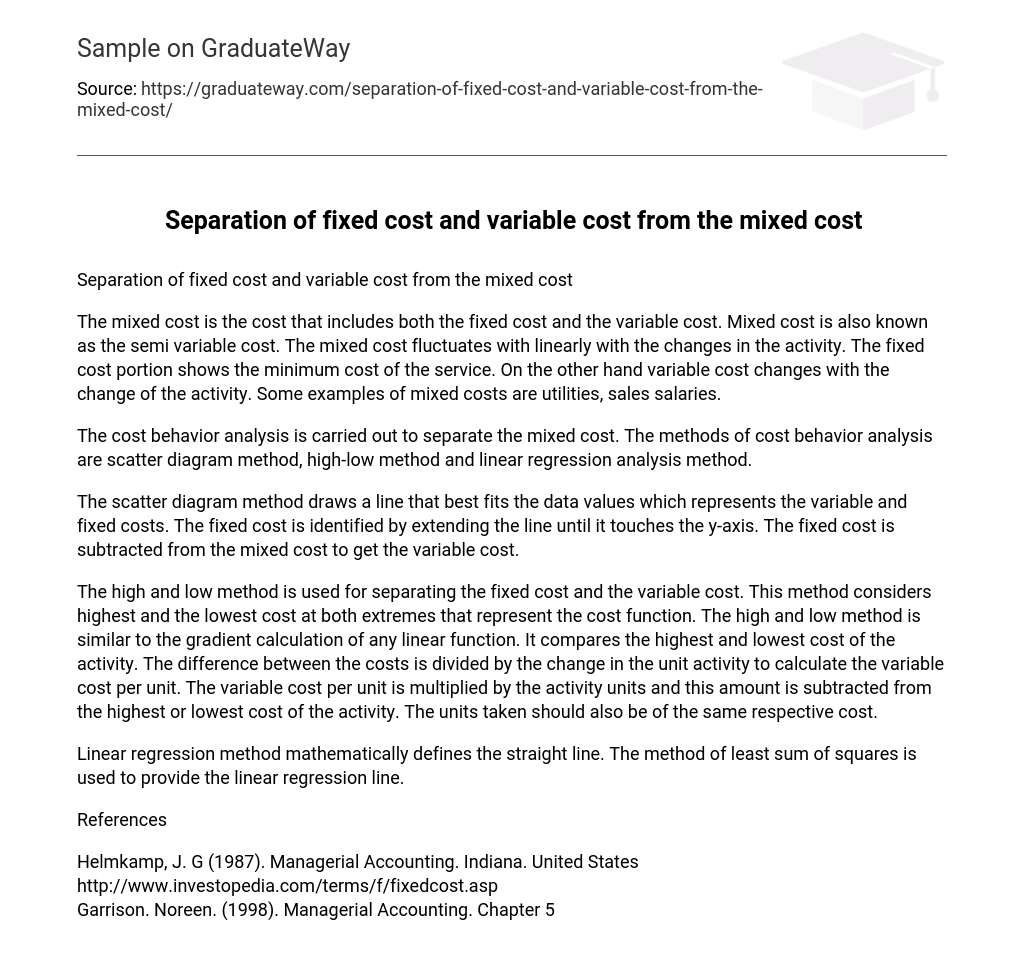The mixed cost is the cost that includes both the fixed cost and the variable cost. Mixed cost is also known as the semi variable cost. The mixed cost fluctuates with linearly with the changes in the activity. The fixed cost portion shows the minimum cost of the service. On the other hand variable cost changes with the change of the activity. Some examples of mixed costs are utilities, sales salaries.
The cost behavior analysis is carried out to separate the mixed cost. The methods of cost behavior analysis are scatter diagram method, high-low method and linear regression analysis method.
The scatter diagram method draws a line that best fits the data values which represents the variable and fixed costs. The fixed cost is identified by extending the line until it touches the y-axis. The fixed cost is subtracted from the mixed cost to get the variable cost.
The high and low method is used for separating the fixed cost and the variable cost. This method considers highest and the lowest cost at both extremes that represent the cost function. The high and low method is similar to the gradient calculation of any linear function. It compares the highest and lowest cost of the activity. The difference between the costs is divided by the change in the unit activity to calculate the variable cost per unit. The variable cost per unit is multiplied by the activity units and this amount is subtracted from the highest or lowest cost of the activity. The units taken should also be of the same respective cost.
Linear regression method mathematically defines the straight line. The method of least sum of squares is used to provide the linear regression line.
References
Helmkamp, J. G (1987). Managerial Accounting. Indiana. United States
http://www.investopedia.com/terms/f/fixedcost.asp
Garrison. Noreen. (1998). Managerial Accounting. Chapter 5





